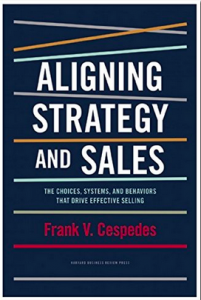 This week sees the publication of a new book I want to bring to your attention. It’s by Frank Cespedes, a professor at Harvard Business School, and an old friend from our mutual consulting days. The book is called Aligning Strategy and Sales, and it might have been called “The Massive Business Gap Sitting Right Before Your Eyes.” To use an overly simple athletic metaphor, the handoff from strategy to sales is the source of a great deal of lost value.
This week sees the publication of a new book I want to bring to your attention. It’s by Frank Cespedes, a professor at Harvard Business School, and an old friend from our mutual consulting days. The book is called Aligning Strategy and Sales, and it might have been called “The Massive Business Gap Sitting Right Before Your Eyes.” To use an overly simple athletic metaphor, the handoff from strategy to sales is the source of a great deal of lost value.
I hesitate to call it a revolutionary book – but you haven’t seen anything like it. It’s very important. Especially for those of you in sales, I recommend it.
Meanwhile, here’s Frank.
————————————————————–
CG: What brought you to this topic of aligning strategy and sales?
FC: My academic research always focused on go-to-market elements, including channels and sales management. Then, when I left academia and ran a business for 12 years, I had to meet payroll and sell. Then, after getting lucky in business and returning to academia, I taught Strategy for a few years. Despite decades of attention to planning, there is remarkably little research about how to link strategy with the nitty-gritty of field execution, especially sales efforts. If the gods of strategy even mention sales, it’s typically advice from a fortune cookie: get incentives right, or work as a team, or re-organize. In other words, do good and avoid evil.
CG: That sounds about par for the course.
FC: Conversely, there’s a vast literature about selling. Much is anecdotal, but some—Neil Rackham’s work is still the best, in my opinion—is grounded in good research. However, this advice is misleading in a different way: the consultants and trainers who make their living this way tend to promote the universal applicability of a particular selling methodology (again, Neil is an exception), and they treat sales in isolation from strategy. The result is that much sales training has a perverse effect: people work harder but not necessarily smarter. Selling, no matter how clever and creative, can’t generate sustained returns if it’s not linked to good strategy. That may sound obvious, but it’s not been discussed actionably.
CG: Let me get this straight: you’re saying there’s a big fat chasm of under-performance in business because strategy and sales don’t align? Just how big a deal are we talking about?
FC: None of this would matter much if de facto alignment were the norm. But it’s not. The research results are cited in my book and, as they say, they speak volumes. Studies find that few strategies—some research indicates less than 10%–are executed successfully and that, on average, firms deliver only 50-60% of the financial performance that their strategies and sales forecasts promise. That’s a lot of wasted money and effort. Ever wonder why I-Bankers and other capital-market analysts tend to be a cynical bunch? Companies regularly over-promise and under-deliver in their espoused strategic goals and sales forecasts.
CG: So, why does this happen?
One reason is that the strategic planning process in firms generates a disconnect with the requirements of sales decision making. About two-thirds of companies treat strategic planning as a periodic event, typically as part of the annual capital-budgeting process. Companies tend to do plans by business unit or P&L unit, even when sales sells across those units. The average corporate planning process takes an estimated 4-5 months per year. While this is going on, the market does what the market will do, and sales must respond issue by issue and account by account. In other words, even if the output of planning is a great strategy (clearly, a big if), the process itself often makes it irrelevant to sales executives.
CG: OK, I get the time disconnect. Give us a simple real world example of how all this can go wrong?
FC: Here’s an example I discuss in more detail in the book. It’s unfortunately representative. For many years, a company I’ll call Document Security Management (DSM) had a great business in retrieving, shredding and/or securely storing organizations’ documents. Executives and their assistants loved its one-stop-shop value proposition, and DSM’s sales force cultivated good relationships with them. DSM provided a complete service and their customers could then dedicate their high-paid lawyers and other professionals to better uses. By the early 2000s, however, cheaper digital storage technology, especially the cloud, changed the market. DSM’s CEO was determined not to be fatally “disrupted” by an emerging technology, and DSM introduced its own cloud-based storage and directed the sales force to bundle it with traditional services.
The results were awful. Many of the salespeople lacked the technical knowledge to work with clients’ IT departments. Pricing was a problem, because the physical and digital services had very different cost structures. And in spite of repeated training efforts, reps often sold only the lower-priced digital service, not the bundle. Contract renewals for traditional services fell sharply, as did profits. So DSM modified its sales compensation plan, but then digital sales declined and emerging competitors established strong footholds with multiyear contracts, effectively locking DSM out of accounts as storage increasingly migrated to the cloud. Ultimately, DSM spun off its digital unit and remains a much smaller company.
What’s the problem here? Surely, you can’t disagree with the basic strategic intent. Anyone who has absorbed the lessons of Clay Christensen’s work on disruptive innovation would find it hard to argue that DSM should not have responded to emerging market reality. That’s a recipe for becoming yet another case study about market myopia. The ultimate problem was senior leaders embarking on a strategy without considering the field realities facing the people key to executing that strategy at customers. And this occurs, very often, in many situations: M&A situations where the investment thesis rests on cross-selling or packaged solution bundles, entering a new segment with different buying processes, introducing a new product, scaling a business beyond early adopters, or dealing with new entrants.
Many senior executives, years removed from actual customer contact, are often blithely unaware of the embedded strategic commitments that sales activities daily represent. For example, executives can worry prudently and diligently all they want about disruptive innovators; you need a sales force aligned with strategy to do something about it. Otherwise, all you’re doing is worrying in a currently respectable manner.
CG: Wow. So, where do these disconnects happen? The subtitle of your book is “The Choices, Systems, and Behaviors that Drive Effective Selling.” What are they?
FC: The basic idea is this: In any business, value is created or destroyed in the marketplace with customers, not in planning meetings or training seminars. The market includes the industry you compete in, the customer segments where you choose to play, and the buying processes at customers that you sell and service. Those factors should inform strategy and required sales tasks—what salespeople must be good at to deliver and extract value and so implement your strategy effectively.
Then, the issue is aligning selling behaviors with those tasks. Managers basically have three levers to do that. People: who your salespeople are, what they know, how you hire and develop their skills so they can execute your strategy’s tasks, not those of a generic selling methodology or what they learned at another firm with a different strategy. Control Systems: performance management practices, including sales compensation and the metrics used to measure effectiveness. Sales Environment: the company context in which sales initiatives get developed and executed, how communication works (or not) across organizational boundaries, and how sales managers (not just reps) are selected and developed.
Ultimately, selling effectiveness is an outcome of these factors, not only the result of heroic efforts in the field. And this has very practical implications. If you’re a sales manager, this way of thinking may change how you select and use available selling resources, how you develop your people, and how you look at your own career and development needs. And if you’re a CEO, strategist, or Board member evaluating sales numbers, it can help you to avoid being a sucker for glib generalizations about selling–and, believe me, as someone who works with PE firms and has served on Boards, it happens.
CG: Can you say more about that? It seems that we hear daily about how social media and online technologies are “disintermediating” sales forces and transforming how companies sell.
FC: Yes, based on the business press, you could easily assume that proficiency with social media or digital marketing now determines business success. But consider the basics: US companies spend, annually, more than 3X on sales forces than they spend on all media advertising, 20X more than the total spent on digital marketing, and more than 100X what they currently spend on social media ads. Whenever I see those numbers, I always think about Mark Twain’s comment: “If you’re gonna’ put a lot of eggs in one basket, then keep your eye on that basket!”
CG: But what about all the claims of the Death of the Salesman? Just four years ago this was a big headline in the sales industry.
FC: It’s simply not true that sales forces are being replaced by ecommerce, social media, or other elements of the internet. According to US Bureau of Labor Statistics, the number of people in sales occupations in 2012 was virtually the same as in 1992—before the rise of the internet. And this almost certainly understates the real numbers: as you know, business developers in many firms, especially professional services firms, are called Associates, Partners, Vice Presidents or Managing Directors, not placed in a “sales” category for reporting purposes.
In fact, if you peek behind the server farms of online firms themselves, you find face-to-face and inside sales organizations as the engine of profitable growth. At Groupon, over 45% of employees are in sales; at Google, it’s about 50%; and at Facebook, the sales force’s ability to translate “likes” into advertisers will make or break that company’s valuation going forward.
The internet is realigning sales tasks. For example, relatively few cars are actually bought online. But about 90% of Americans research the purchase via Edmunds.com or other online source before going to a dealer. The average car shopper now spends more than 11 hours online and only 3.5 hours in trips to dealerships. But this makes selling more important, not less, because it puts more pressure on the sales person’s value-added during the shorter sales experience. Smartphones, online reviews, social media blogs—all these tools are having a similar effect across many buying/selling situations.
But, perhaps focused on technology or the media buzz, many execs ignore the implications for sales tasks and the links between Sales and other parts of their companies that deal with customers before and after actual selling takes place. Don’t believe the hype: salespeople, and the customer trust they do or don’t generate, are not becoming obsolete. With Paul Nunes of Accenture, I wrote an HBR article over a decade ago—at the height of another hype cycle when most commentary was predicting (in fact, assuming) disintermediation of sales forces. The article attracted a lot of attention, most of it very negative. We were labeled as reactionaries, oblivious to ‘disruptive innovation,’ and so on. But look at empirical reality years later: they were wrong, and we were right.
CG: What’s the biggest, over-arching problem or issue you see in the field of selling?
FC: Selling is probably the most contextually-determined set of skills in a company: what works there does not necessarily work here. There’s now a century of research about salespeople. Sales talent comes in all shapes and sizes, because selling jobs vary hugely in the kind of product or service sold, price points, the customers a rep is responsible for, the numbers and types of people contacted during sales calls, the relative importance of technical knowledge, and so on—in other words, selling effectiveness depends on the particular sales task. You wrote an excellent piece about this last year (“Half of What You’ve Learned about Sales is Wrong,” TrustMatters, April 15, 2013), and I agree with you: one size doesn’t fit all.
Yet, sweeping generalizations and outright stereotypes about “sales personalities” and the alleged core “traits” of effective salespeople still dominate the field. Why? The novelist Saul Bellow liked to explain the difference between ignorance and indifference this way: “I don’t know and I don’t care.” Many executives and sales managers don’t know about this research. In fact, as others have pointed out, many sales managers have a classic cloning bias: they hire in their own image. And many trainers and consultants just don’t care: they have a hammer, and everything looks like a nail.
In my experience, these generalizations are destructive and not just abstractions. They encourage quick-fix approaches that substitute for more fundamental sales and strategy issues confronting firms. Those approaches may be quick but rarely a fix. The stereotypes also blind managers to the interactions between strategy, sales tasks, and selling requirements that they are, presumably, paid to manage.
CG: OK, time for some key takeaways about aligning strategy and sales. Let’s focus first on the Strategy side.
FC: I don’t think I’m saying anything truly original about effective strategy formulation. But I don’t apologize for emphasizing the fundamentals because, for various reasons, executives and sales people tend to forget them. Many companies confuse strategy with things like purpose, vision, or values. That’s bad news for your firm and your career. It’s the responsibility of those crafting strategy to insist on those distinctions. Any organization’s strategy, purpose or vision cannot be independent of how the world changes. If you simply cling to those abstractions, you’re just stubborn, not principled, or you may believe your aspiration is just too big to fail; it’s not.
Then, you must communicate what your strategy means for market priorities, who are and are not your customers, and the implications for sales tasks. Most firms don’t do this—either because leaders are not clear about strategy or they worry this information will get to competitors. If the issue is the former, then clarify strategy: it’s hard for people to execute what they don’t understand. And if the issue is the latter, you have bigger problems to worry about than competitors reading your strategy documents if your salespeople don’t understand them.
CG: And the key takeaways for those carrying a bag or managing a sales effort?
FC: First, as always, People: You need disciplined hiring that’s linked to your strategy, focused and customized training initiatives, and on-going attention to broadening salespeople’s skills as markets and sales tasks change. Sorry, but almost all serious research about people in business underscores these fundamentals and debunks glib prescriptions about talent acquisition.
Second, Performance Reviews are still grossly underutilized levers for influencing behavior in many sales organizations. Busy managers treat them as drive-by conversations that are really about compensation, not review, evaluation, and development. But so much of strategy – sales alignment is only visible and manageable through on-going account and performance reviews. This is a trainable skill and there’s lots of room for improvement in most sales forces when it comes to conducting performance reviews.
Third, Perspective: Strategy is about confronting external market facts, and customers ultimately determine what are relevant selling behaviors today, not yesterday. It’s not the responsibility of the market to be kind to your strategy or current sales model. It’s your responsibility to understand the evolving market and its sales tasks. And you can’t do that from headquarters, the branch office, or solely through data analytics. A character in a John le Carre novel says something that every sales leader and C-suite executive should engrave on their desk or tattoo on some prominent body part: “A desk is a dangerous place from which to watch the world,” especially the sales world.
CG: Frank, this has been great. I’m still kind of amazed that there is such an enormous opportunity that’s been relatively overlooked; but there it is, and you’ve laid it out very clearly.
FC: Charlie, it’s truly been my pleasure. You’ve made TrustMatters a wonderful, straight-shooting medium for people to engage about sales. I thank you for the chance to add to that dialogue.


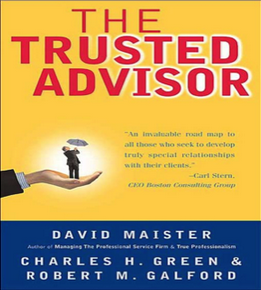
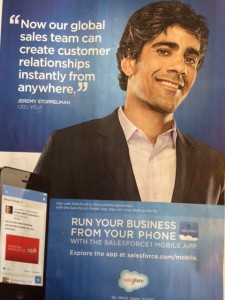 “Now our global sales team can create customer relationships instantly from anywhere.”
“Now our global sales team can create customer relationships instantly from anywhere.”
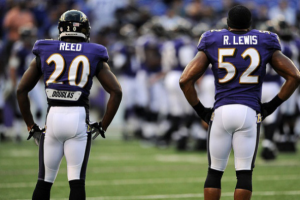 Ed Reed
Ed Reed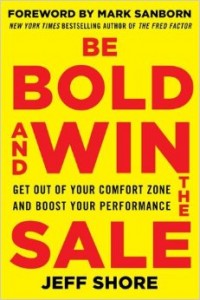
 Let’s get tactical.
Let’s get tactical.